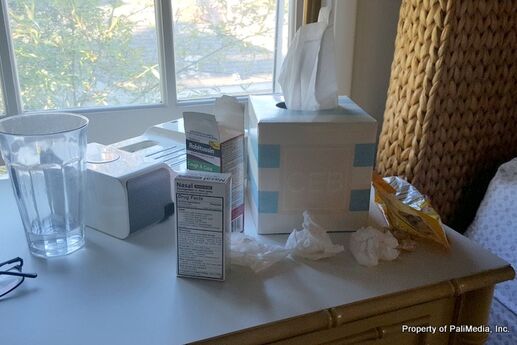The Best Foods for Sick Kids
When your kid is miserable with a stuffy nose, fever or stomachache, it's tempting to feed her what she wants (ice cream!) or let her skip dinner altogether. But research reveals that eating the right comfort foods can soothe her symptoms and strengthen her immune system. Even if your little one doesn't have much of an appetite, encourage her to eat; in combination with symptom- and age-appropriate OTC remedies, she'll feel better in no time. Here, the best foods for sick kids:
For a stuffy nose … feed them soup.
"The hot, steaming broth loosens mucus, so your child can breathe easier," says Amy Jamieson-Petonic, a registered dietician and the director of wellness coaching at Cleveland Clinic. For even more relief, serve up a bowl of chicken soup: Researchers from the University of Nebraska Medical Center found that this childhood staple may relieve cold symptoms by inhibiting inflammation-causing cells in the body."Plus, chicken soup has carrots, celery and onions," says Jamieson-Petonic."These veggies provide vitamins and minerals that boost the immune system."
For a fever … feed them calorie-rich fare.
Forget starving a fever! "You'll only deprive the body of the nutrients it needs to get well," says Jamieson-Petonic. A feverish child uses more energy, she adds, so they need to consume additional calories. If your kid doesn't feel like eating, try adding nutritional bulk to every bite he takes: Slip banana slices into a peanut butter sandwich, mix dry milk powder in mashed potatoes or mac 'n' cheese, and blend flaxseed into a fruit smoothie.
For a sore throat … feed them soft foods.
Does it hurt to swallow? Scrambled eggs, oatmeal, soup and yogurt can coat a painful throat while providing nutrition. Another soother for children above the age of one: honey. According to a recent study published in the Archives of Pediatrics; Adolescent Medicine, this sweet substance can also lessen nighttime coughing and improve sleep. So if your child can't stop hacking, swirl a spoonful into a mug of herbal tea or a glass of warm milk.
For a stomachache … feed them crackers.
"Bland foods stabilize digestion and gradually get the system up and running again," says Connie Evers, a registered dietician in Portland, Ore. Once the worst is over, she recommends moving on to more substantial fare, like bananas, rice, applesauce and toast. Also steer clear of colas: The caffeine content can make nausea even worse.
For any type of illness … feed them popsicles.
For sick kids, proper hydration is key."Sleeping for long periods of time -- as well as running a fever -- can lead to fluid loss," says Evers. To make sure your child sips often, place a water bottle on her bedside stand. Evers also suggests freezing 100-percent cranberry and orange juices into homemade popsicles; the treat serves up extra liquids along with a dose of vitamin C.
For recovery … feed them balanced meals.
Even if they ask for it, don't serve them their favorite fast-food meal or sugary dessert."Foods high in sugar or saturated fat can increase inflammation in the body," explains Jamieson-Petonic."That can make kids feel worse -- and even slow the healing process." Fill her plate with vitamin-rich produce, whole grains and lean proteins instead."These foods strengthen the immune system, which helps fight viruses," she says."It can also help lower the risk of complications, like bronchitis."
Photo by Piotr Miazga on Unsplash






